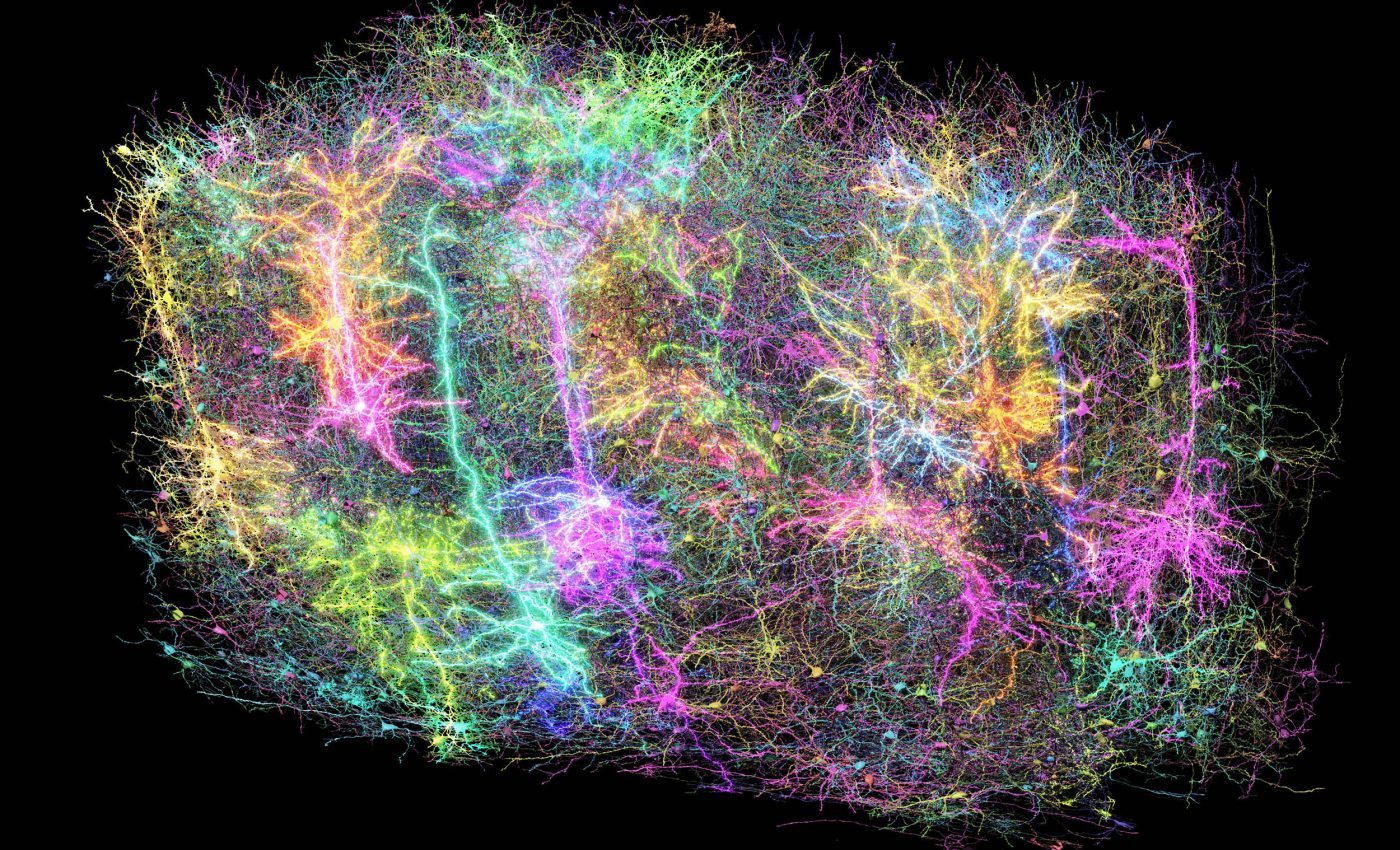
Huge advance in brain research that was supposed to be 'impossible'
What happens when a mouse watches The Matrix? Apparently, science advances. A recent project used that very setup to produce the most detailed functional brain map ever created.
It captures 84,000 neurons and their 500 million synapses in vivid, 3D detail. The resulting data opens a new chapter in neuroscience, and hints at how thoughts and perceptions arise from a tangled mess of neural wiring.
This isn’t just a technical marvel. It’s a window into the brain’s hidden world, one that may eventually explain how we think, remember, or lose ourselves to disease.
From gene engineering to artificial intelligence, the research combined many tools – but its essence lies in one simple curiosity: how do brain cells connect to form what we experience?
“It definitely inspires a sense of awe, just like looking at pictures of the galaxies,” said Forrest Collman of the Allen Institute, one of the project’s leading researchers. “You get a sense of how complicated you are …”
Inside the mouse mind
The experiment began with entertainment. Scientists played a variety of video clips to a mouse – snippets of sci-fi, nature scenes, animations, and sports.
The mouse had been genetically engineered to make its neurons glow when active. A laser-powered microscope captured the resulting activity in the brain’s visual cortex.
The Baylor College of Medicine team recorded how individual brain cells lit up as the mouse viewed the world on screen.
Every flicker of light marked a neuron in action, communicating through a vast, living network. This activity was concentrated in a tiny brain section, about the size of a poppy seed.
From that glowing tissue, the Allen Institute took over. They shaved the brain sample into more than 25,000 slices, each one thinner than a human hair. Using electron microscopes, they captured almost 100 million images.
These pictures revealed the fibers – axons and dendrites – connecting the neurons like spaghetti in a bowl.
Brain slices turned into colorful 3D map
The real magic began with analysis. Scientists used powerful software and artificial intelligence to stitch the images back together.
This digital reconstruction recreated the tangled circuits in 3D. Each neural fiber was given a different color, letting researchers distinguish one from another with clarity.
“You can make a thousand hypotheses about how brain cells might do their job but you can’t test those hypotheses unless you know perhaps the most fundamental thing – how are those cells wired together,” said Clay Reid, one of the project’s pioneers.

The colored map wasn’t just for show. It allowed researchers to track which neurons connected to which – and how signals might travel through the maze.
Even more impressively they matched those connections to the activity recorded earlier, while the mouse was watching movies.
This link between structure and function has rarely been achieved at such scale. If laid end to end, the neuron wiring in the tiny sample would stretch over 5 kilometers (3 miles).
New brain map may explain disorders
This kind of detailed mapping holds promise beyond pure curiosity. Understanding brain circuitry could lead to new insights into neurological diseases. Disorders like Alzheimer’s and autism might result from wiring problems – connections that form incorrectly or not at all.
That’s where the new dataset becomes powerful. It allows scientists to explore healthy brain wiring in full detail. Future comparisons with diseased tissue might reveal subtle patterns that are responsible for serious brain malfunctions.
“The technologies developed by this project will give us our first chance to really identify some kind of abnormal pattern of connectivity that gives rise to a disorder,” said Sebastian Seung, a lead researcher from Princeton.
The researchers stress that this is just the beginning. Their current map represents a small part of the mouse brain. Mapping an entire mouse brain will take more time, effort, and technology. But the foundation is now in place.
A shared brain map for all
The team didn’t just build a brain map – they made it public. The full 3D reconstruction is now available for scientists around the world to explore. Curious minds can also dive in, even if they aren’t neuroscientists.
“The beauty and complexity that you can see in these actual neurons and the hundreds of millions of connections between them” make it a work of both science and art, said Collman.
Researchers at Princeton created digital tools to navigate the data. Anyone can use these tools to trace circuits, identify neurons, or design their own experiments. This kind of sharing echoes the spirit of the Human Genome Project, which helped launch gene-based medicine after decoding our DNA.
The road ahead
The comparison to the Human Genome Project is not casual. Neuroscientists believe this work will have a similar impact. Mapping the brain at this level can change how we approach mental health, cognition, and learning.
Harvard researchers Mariela Petkova and Gregor Schuhknecht, who were not involved in the study, offered strong praise.
The work “marks a major leap forwards and offers an invaluable community resource for future discoveries,” they wrote. The shared data “will help to unravel the complex neural networks underlying cognition and behavior.”
In this new map, scientists see more than lines and colors. They see a future where understanding the brain’s wiring may unlock the mind itself. One mouse, a movie, and millions of synapses – together, they’ve brought us one step closer.
The study was published in the journal Nature.
—–
Like what you read? Subscribe to our newsletter for engaging articles, exclusive content, and the latest updates.
Check us out on EarthSnap, a free app brought to you by Eric Ralls and Earth.com.
—–













